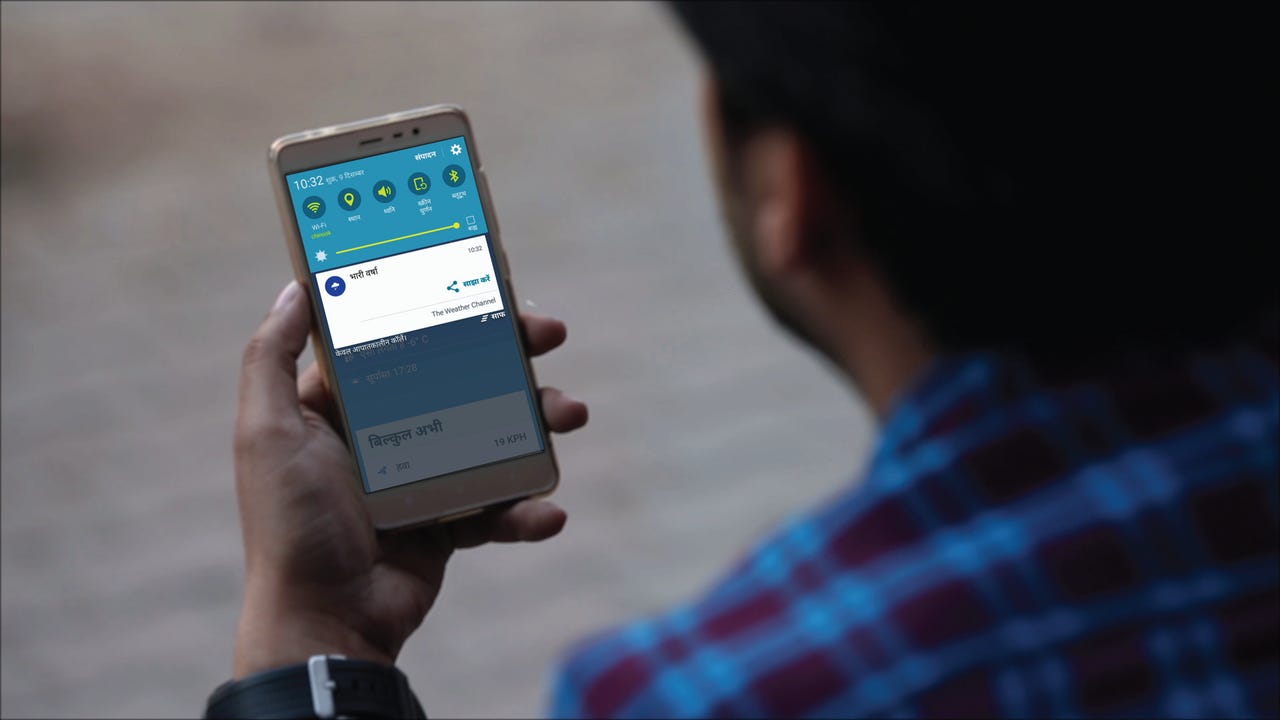This peer-to-peer mesh network allows smartphones to talk without Wi-Fi or cell coverage


The alerts are designed to warn people about impending severe weather events such as flooding.
Research scientists are building a new form of networking technology designed to provide billions of people with potentially lifesaving weather alerts, even if they don't have internet connectivity.
Developed by IBM Research and The Weather Company, Mesh Network Alerts is a peer-to-peer mesh networking technology that allows Android devices to communicate with each other without the need for Wi-Fi or cellular connectivity.
The technology is set to be rolled out in India first, before spreading to countries across Africa, Asia, and Latin America. It is aimed at areas where networks are congested and connectivity is limited, and will use and The Weather Channel app to provide alerts during disasters or impending severe weather, such as flooding.
At only 3.2 MB -- in order to cater for the smaller amount of storage on Android devices in emerging markets -- the app can store weather data offline for up to 24 hours, and offers user-selected options of whether to update on Wi-Fi, cellular, or on request.
Using pre-installed software such as Bluetooth and Wi-Fi radios, the Mesh Network Alert software is capable of communicating between devices up to a few hundred feet from one another.
By travelling in this way, the messages can transfer across multiple devices and spread the weather alerts much further than the initial few hundred feet, eventually alerting people across whole cities, regions, or even countries.
Perhaps most importantly, the mesh network can provide alerts to other devices, even if one which receives an alert isn't currently being used.
"This is essential, because an alert may arrive at any time and, on receiving it, each device must forward the alert to a neighbouring device to ensure that everyone gets the message in time. In this way, mesh networking exemplifies the power of communities," says Dr. Nirmit Desai, one of the IBM researchers behind the project.
The first alerts will come directly from The Weather Company, and both it and IBM understand the importance of ensuring the network is secure -- a fake news alert about a made-up weather disaster could be catastrophic.
"We can protect both the confidentiality and the integrity of the messages. In doing so, we are bringing together IBM's security expertise and The Weather Company's experience in delivering highly usable apps to millions of users," says Dr Desai.
"We employ state of the art cryptography techniques to ensure that users are only shown alerts that verifiably come from The Weather Company".
The weather alerts represent only the first potential application for Mesh Alert Networks; the nature of the technology means it'd be useful in congested areas like sports arenas, concerts, and even cruise ships, where network bandwidth can become quickly overloaded.
While cellular connectivity struggles in areas like this, mesh networks thrive in these high density environments.